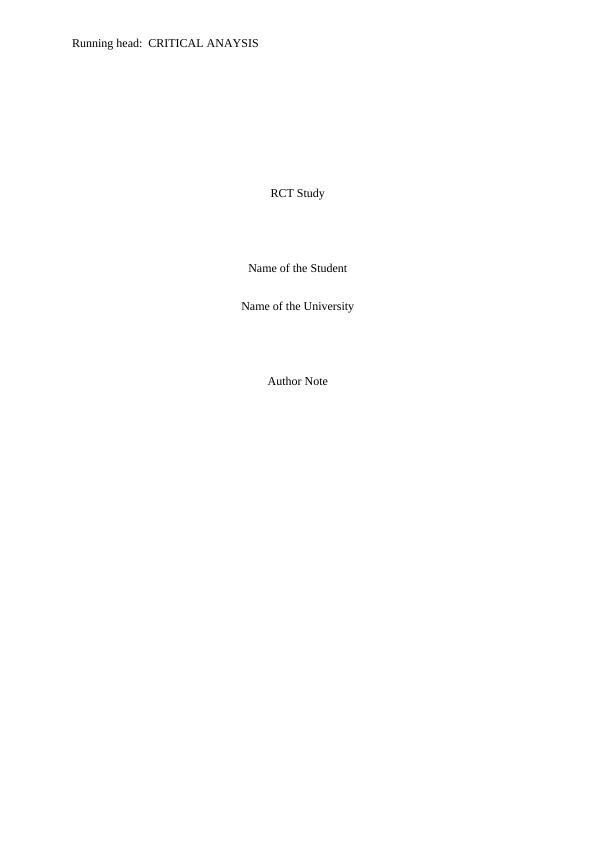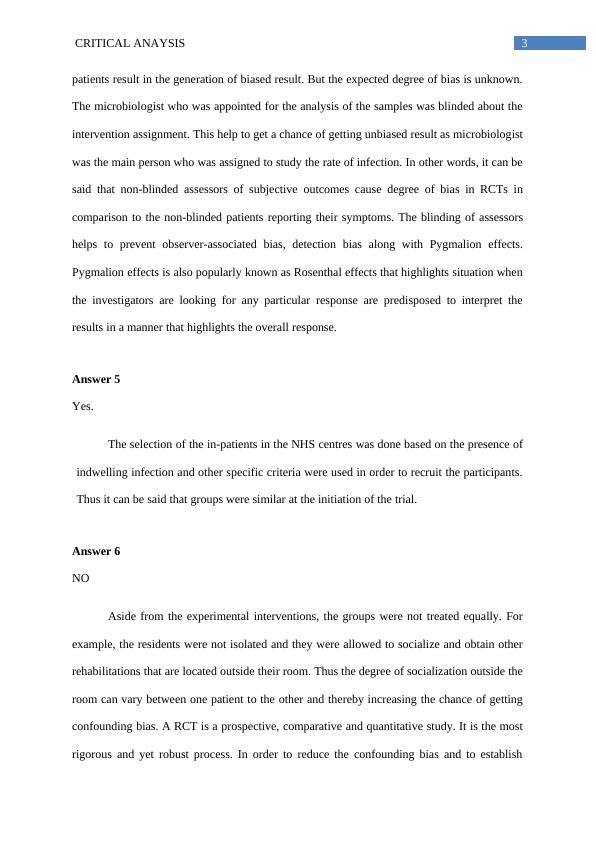Critical Analysis of RCT Study
CASP Checklist: 10 questions to help you make sense of a Qualitative research
15 Pages4251 Words40 Views
Added on 2023-01-10
About This Document
This critical analysis examines a randomized clinical trial study on the efficacy of a targeted infection prevention intervention in nursing home residents with indwelling devices. The analysis evaluates the study design, randomization process, blinding, sample size, outcomes, and applicability of the results.
Critical Analysis of RCT Study
CASP Checklist: 10 questions to help you make sense of a Qualitative research
Added on 2023-01-10
ShareRelated Documents
End of preview
Want to access all the pages? Upload your documents or become a member.
Report on Randomised Control Trial
|9
|2361
|64
Article on Effectiveness of Preoperative Immunonutrition
|4
|691
|137
Effect of Nurse Empowerment Educational Program on Patient Safety Culture
|10
|2469
|59
Effect of Nurse Empowerment Educational Program on Patient Safety Culture: A Randomized Controlled Trial
|9
|2326
|391
Implementation of evidence-based treatment protocols to manage fever, hyperglycaemia, and swallowing dysfunction in acute stroke (QASC): a cluster randomised controlled trial
|10
|2238
|117
Evaluation of effects of nutrition intervention on healing of pressure ulcers and nutritional states (randomized controlled trial)
|8
|1748
|78




